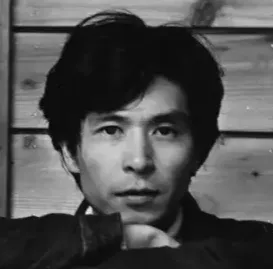
Jiro Takamatsu
Jiro Takamatsu (1936-1998) was a Japanese artist who emerged as one of the most important figures in the Japanese art scene of the 1960s and 1970s. His multifaceted approach encompassed photography, sculpture, painting, drawing, and performance, all aimed at probing the philosophical and material aspects of art.
The impact of Takamatsu's artistic practice goes beyond the confines of his personal endeavors. His work holds a significant place in the discourse surrounding conceptual art, thereby extending its influence to the wider international art community.
Biography of Jiro Takamatsu
Jiro Takamatsu was born in Tokyo in 1936. He enrolled at the Tokyo University of the Arts from 1954 to 1958, focusing on oil painting. There, he crossed paths with Natsuyuki Nakanishi, who would later join him as a fellow member of the short-lived postwar avant-garde group Hi-Red Center.
After completing his studies, Takamatsu showed his paintings at the non-juried Yomiuri Indépendant Exhibition. At the Yomiuri Independant, Takamatsu formed his network of anti-establishment artists, turning it into a hub for exploration and experimentation, particularly among the younger avant-garde artists, starting around 1958.
On October 18, 1962, Jiro Takamatsu, with his future collaborator Natsuyuki Nakanishi and a group of fellow artists, organized an artistic happening known as the "Yamanote Line Incident." Takamatsu took on the role of the primary photographer, documenting the entire event.
In 1963, Jiro Takamatsu, along with Natsuyuki Nakanishi and Akasegawa Genpei, co-founded the influential art collective known as Hi-Red Center. Although they had begun as painters, the artists shifted their focus to "direct action" through Hi-Red Center, borrowing the term from prewar socialist agitators. Despite its short-lived existence, this group left a lasting impact through a series of performance art events aimed at breaking down the barriers between everyday life and art.
In 1964, Jiro Takamatsu returned to painting and embarked on his renowned Shadows series, which he continued until the end of his life. Through the Shadows series, Takamatsu initiated a profound examination of the essence of the painting itself. He adopted a realistic approach, meticulously portraying the shadows cast by individuals onto white walls, uneven surfaces, or wooden planks, ultimately creating a captivating trompe l'oeil effect.
In November 1966, Jiro Takamatsu participated in the two-part exhibition and event program "From Space to Environment," held in Tokyo. Takamatsu's contribution to this exhibition was his sculpture-installation work titled "Chairs and the Table in Perspective" (1966), which belonged to his "Perspective" series.
From 1968 to 1972, Jiro Takamatsu held a teaching position at Tama Art University in Tokyo, and he made significant contributions to the emergence and growth of the Mono-ha movement. As a key figure within this artistic movement, Takamatsu's expertise in topological geometry and his profound understanding of concepts like absence and emptiness greatly influenced his students, including notable artists like Nobuo Sekine.
Takamatsu was included in the Japanese Pavilion for the 33rd Venice Biennale in 1968. The exhibition, curated by art critic Hariu Ichiro, showcased works by Miki Tomio, Sugai Kumi, and Yamaguchi Katsuhiro. Jiro Takamatsu was honored with the prestigious Carlo Cardazzo Prize, which recognizes outstanding Italian or foreign artists. During this time, Takamatsu formed a friendship with the artist and printmaker Hitoshi Nakazato, who joined him as a fellow teacher at Tama Art University in the same year.
While Takamatsu's art gained recognition in Japan during his lifetime, his international recognition grew in the years following his death. His works have been exhibited around the world in major museums such as the Museum of Modern Art (MoMA) in New York, the Tate Modern in London, the National Museum of Modern Art in Tokyo, and prestigious galleries like Fergus McCaffrey and Stephen Friedman Gallery.
Jiro Takamatsu's contributions to conceptual art and his innovative approach to exploring the boundaries of art continue to be celebrated, and he remains an influential figure in the Japanese art scene.
Jiro Takamatsu's art style
The art style of Jiro Takamatsu is a thought-provoking exploration of perception and the nature of reality. He challenges the act of seeing and delves into the differences between factual information and subjective experiences of perception.
To pursue a deeper understanding of the true nature of things, Takamatsu believes that the artist must transform the process of investigation into art. This conceptual approach to art-making aligns with his exploration of perception and the act of seeing. By turning his investigations into visual manipulations, Takamatsu challenges the viewer to contemplate the discrepancy between what we see and what actually exists, between the act of seeing and the act of being.
Takamatsu's art style can be described as introspective, and focused on the relationship between vision and reality. He encourages viewers to question their own ways of seeing and experiencing the world, inviting them to delve beyond surface appearances and engage in a deeper contemplation of the nature of perception itself.
Years:
Born in 1936
Country:
Japan, Tokyo